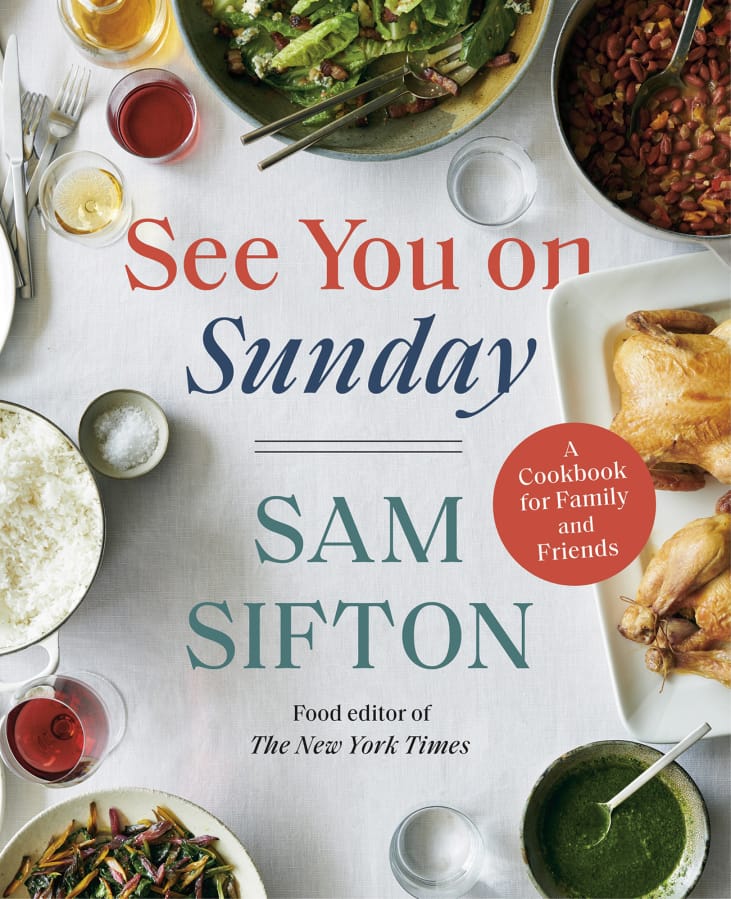When he was working on his new cookbook, “See You on Sunday,” New York Times food editor Sam Sifton couldn’t have known that we’d suddenly be so focused on home cooking. His idea was to create a guide for preparing meals for groups larger than the average American family, and dishes that are relatively easy and inexpensive. The goal is high-impact, low-stress cooking.
Now that we are thinking more about batch cooking — creating larger-scale recipes that can be used as multiple meals or frozen for later use — his new book seems perfectly timed for this stay-at-home period in our lives. Most of the recipes can easily be scaled up or down.
Sifton says this Mapo Ragu is “endlessly adaptable,” based on what you have in your pantry.
Mapo Ragu
Makes about 6 servings. Reprinted from “See You on Sunday” by Sam Sifton. Published by Random House, an imprint of Penguin Random House LLC.
⅓ cup neutral oil, such as canola or grapeseed
3 large yellow onions, peeled and sliced
1 teaspoon kosher salt, or to taste
2 pounds ground pork
8 cloves garlic, peeled and minced
2-inch piece fresh ginger, peeled and chopped
¼ cup gochujang, or to taste
2 tablespoons low-sodium soy sauce
4 teaspoons light brown sugar
1 tablespoon Sichuan peppercorns (optional)
2 bunches kale or any hearty cooking green, roughly chopped
One 12-ounce box silken tofu, drained and whisked
15 to 20 frozen cylindrical rice cakes (optional)
1 bunch scallions, green and white parts, thinly sliced
Heat around half of the oil in a wok set over medium-high heat. When the oil shimmers, add the onions and a pinch of salt. Cook, stirring occasionally, until the onions have released their moisture and are starting to brown, about 10 minutes. Then turn the heat down to low and continue to cook, stirring every few minutes, until the onions have turned golden brown and sweet, an additional 20 to 30 minutes.
Tip the onions into a bowl, and return the wok to high heat on the stove. Add the remaining oil, then the pork, and cook, breaking the meat up with a spoon, until it is just cooked but not yet browning, about 15 minutes. Add the cooked meat to the reserved onions.
Meanwhile, put a large pot of salted water over high heat and bring to a boil.
Return the wok to the stove over medium heat and cook the garlic and ginger in the fat remaining from the pork (add an extra splash of neutral oil, if necessary). When the garlic and ginger soften, add the gochujang, soy sauce, brown sugar and Sichuan peppercorns, if using. Add around 1 cup water, enough to loosen the gochujang and make a sauce, then return the pork and onions to the wok and stir to combine. Adjust the seasonings.
Bring the sauce to a simmer and add the chopped greens, then stir to combine and cook until they have started to soften, about 5 minutes. Tip the whisked silken tofu into the sauce and stir to combine.
Meanwhile, put the rice cakes, if using, into the boiling water for 3 to 5 minutes to soften, then drain them and add to the wok. Or just serve the ragu with steamed rice, rice noodles or pasta. Garnish with the sliced scallions and serve.
Notes on ingredients: Many of these ingredients can be found at Asian markets. If some ingredients are hard to find, gochujang can be substituted with miso paste; Sichuan peppercorns can be substituted with chiles or red pepper flakes; silken tofu can be left out completely, “though, boy howdy, does it add a luxurious dimension to the meal.”



